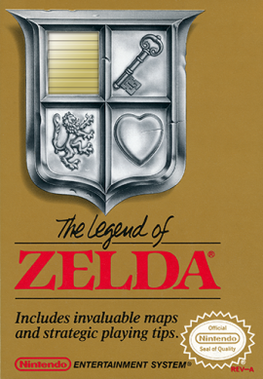
The Legend of Zelda, originally released in Japan as The Hyrule Fantasy: Zelda no Densetsu, is an action-adventure game developed and published by Nintendo. The first game of The Legend of Zelda series, it is set in the fantasy land of Hyrule and centers on an elf-like boy named Link, who aims to collect the eight fragments of the Triforce of Wisdom in order to rescue Princess Zelda from the antagonist Ganon. During the course of the game, the player controls Link from a top-down perspective and navigates throughout the overworld and dungeons, collecting weapons, defeating enemies and uncovering secrets along the way.

Pool of Radiance is a role-playing video game developed and published by Strategic Simulations, Inc (SSI) in 1988. It was the first adaptation of TSR's Advanced Dungeons & Dragons (AD&D) fantasy role-playing game for home computers, becoming the first episode in a four-part series of D&D computer adventure games. The other games in the "Gold Box" series used the game engine pioneered in Pool of Radiance, as did later D&D titles such as the Neverwinter Nights online game. Pool of Radiance takes place in the Forgotten Realms fantasy setting, with the action centered in and around the port city of Phlan.
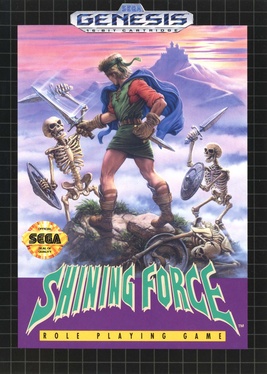
Shining Force: The Legacy of Great Intention is a 1992 turn-based tactical role-playing game for the Mega Drive/Genesis console. While primarily a traditional fantasy-themed game, it contains some science fiction elements.

Dragon Slayer is a series of role-playing video games by Nihon Falcom. The first Dragon Slayer game is an early action role-playing game, released in 1984 for the NEC PC-8801 and ported by Square for the MSX. Designed by Yoshio Kiya, the game gave rise to a series of sequels, most of them created by Falcom, with the exception of Faxanadu by Hudson Soft. The Dragon Slayer series is historically significant, both as a founder of the Japanese role-playing game industry, and as the progenitor of the action role-playing game genre.

Cryo Interactive Entertainment was a French video game development and publishing company founded in 1990, but existing unofficially since 1989 as a developer group under the name Cryo.

Albion is a single player role-playing video game developed and published by Blue Byte for MS-DOS in 1995. It was originally released in German, then translated to English for international release. The game uses a science fiction setting that incorporates traditional fantasy elements, such as magic.

Darklands is a historical fantasy role-playing video game developed and published by MicroProse in 1992 for MS-DOS. The game is set in the Holy Roman Empire during the 15th century. While the geographic setting is historically accurate, the game features many supernatural elements.
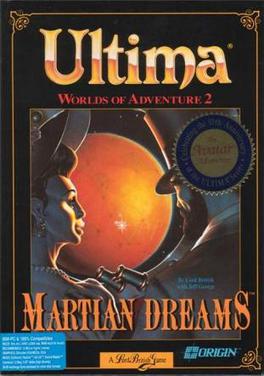
Ultima: Worlds of Adventure 2: Martian Dreams is a role-playing video game, part of the Ultima series, published in 1991, and re-released for Windows and Mac OS via GOG.com in 2012. It uses the same engine as Ultima VI: The False Prophet, as did Worlds of Ultima: The Savage Empire.

The Coles is a colloquial term referring to Corey Cole and Lori Ann Cole, a husband and wife team who are both video game designers. Working together they designed the Quest for Glory. They have also each designed games independently.

An action role-playing game is a subgenre of video games that combines core elements from both the action game and role-playing genre.

Atlantis: The Lost Tales is a 1997 fantasy adventure video game developed and published by Cryo Interactive Entertainment. Interplay Productions published the game in North America, where it released on September 30, 1997. The game is named after its initial and most important setting, Atlantis. It is the first in a Myst-like series, and was followed by Atlantis II, Atlantis III: The New World, Atlantis Evolution and The Secrets of Atlantis: The Sacred Legacy.
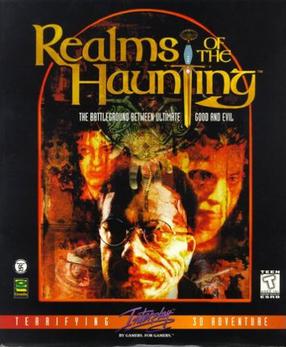
Realms of the Haunting is a first-person adventure shooter game developed by Gremlin Interactive and published by Interplay Productions. It was released in 1996 for MS-DOS compatible operating systems. The 3D engine used in this game was borrowed from Gremlin's own Normality.
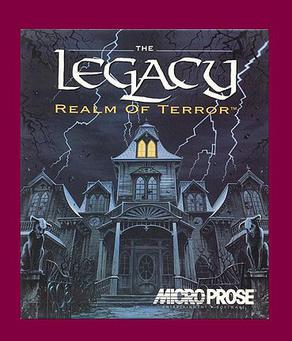
The Legacy: Realm of Terror is a horror role-playing video game developed by Magnetic Scrolls and published by MicroProse for the PC DOS in 1992–1993. A special collector's edition was released by RadioShack. A cancelled version of the game for the Amiga was in development in 1993. It was released digitally on December 20, 2019 by Piko Interactive on GOG.com with support for Microsoft Windows, macOS, and Linux pre-packed with DOSBox.
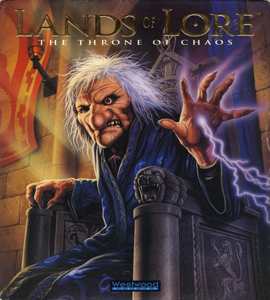
Lands of Lore: The Throne of Chaos is a 1993 role-playing video game developed by Westwood Studios and published by Virgin Games for MS-DOS, the NEC PC-9801, and FM Towns. It was the first installment of the Lands of Lore series. The player travels around various environments, collecting items and battling monsters in an attempt to save the kingdom from a witch named Scotia, who has acquired shape-shifting abilities.

Lands of Lore: Guardians of Destiny is a 1997 action role-playing game, second installment of the Lands of Lore series, a sequel to Lands of Lore: The Throne of Chaos. It brought about a drastic change in gameplay style from its predecessor, opting away from the original's D&D turn-based style in favor of more action elements. A sequel, Lands of Lore III, was released in 1999.

The Legend of Kyrandia: Book Two - Hand of Fate is a 2D point-and-click adventure game, developed by Westwood Studios and published by Virgin Interactive in 1993. It is the sequel to the 1992 video game The Legend of Kyrandia, and the second game of the Fables & Fiends series. The game focuses on the story of a young alchemist and magician, who is thrust with the task of saving Kyrandia from being wiped from existence.
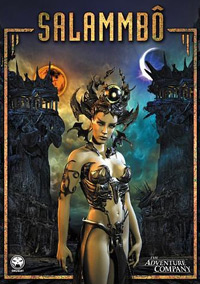
Salammbo: Battle for Carthage is a first-person perspective adventure video game. It began development at Cryo Interactive, but the company went bankrupt during production. The Salammbo team was ultimately acquired by DreamCatcher Interactive, which finished the game's development.

King's Quest: Mask of Eternity is a hybrid point-and-click adventure and action-adventure video game developed and published by Sierra Studios in 1998. It was the eighth official game in the King's Quest series, the first and only game in the main series where the main character is neither King Graham nor a member of his family, as well as the first in the series to use a full 3D engine as opposed to the 2D cartoon or pixel style of the earlier games and the first to omit the sequel numbering system on box artwork and title screen.
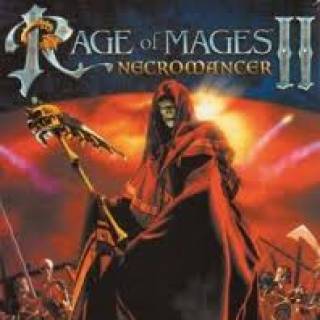
Rage of Mages II: Necromancer is a role-playing video game for Microsoft Windows that was developed by Nival and released in 1999. It is known as Allods 2: Master of Souls in Russia. It contains 43 missions and a multiplayer mode that allows play with up to 16 players.















